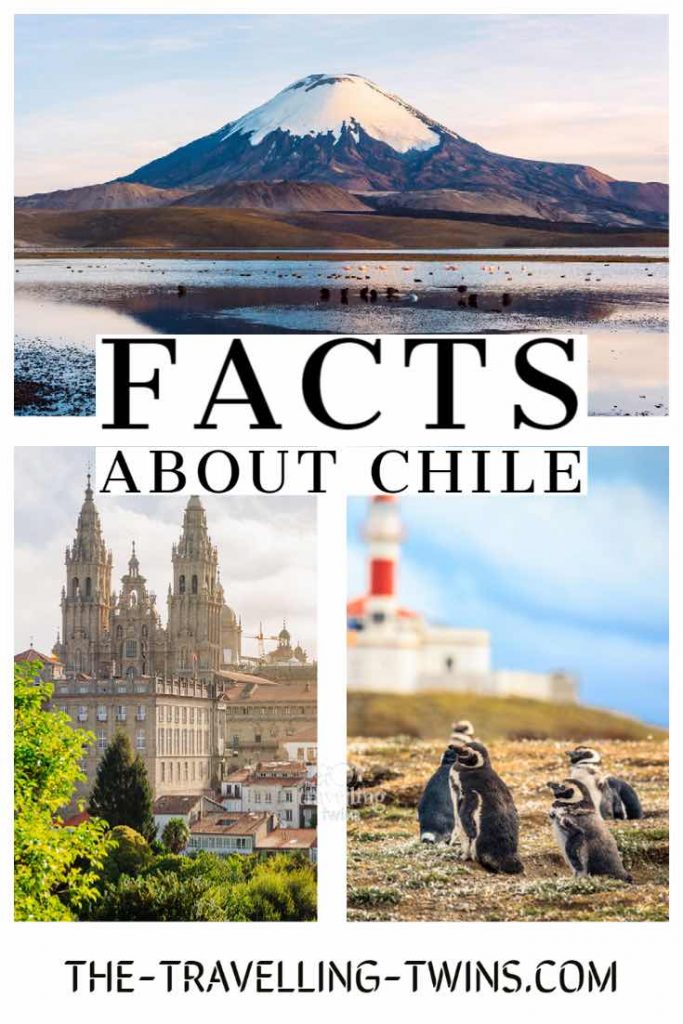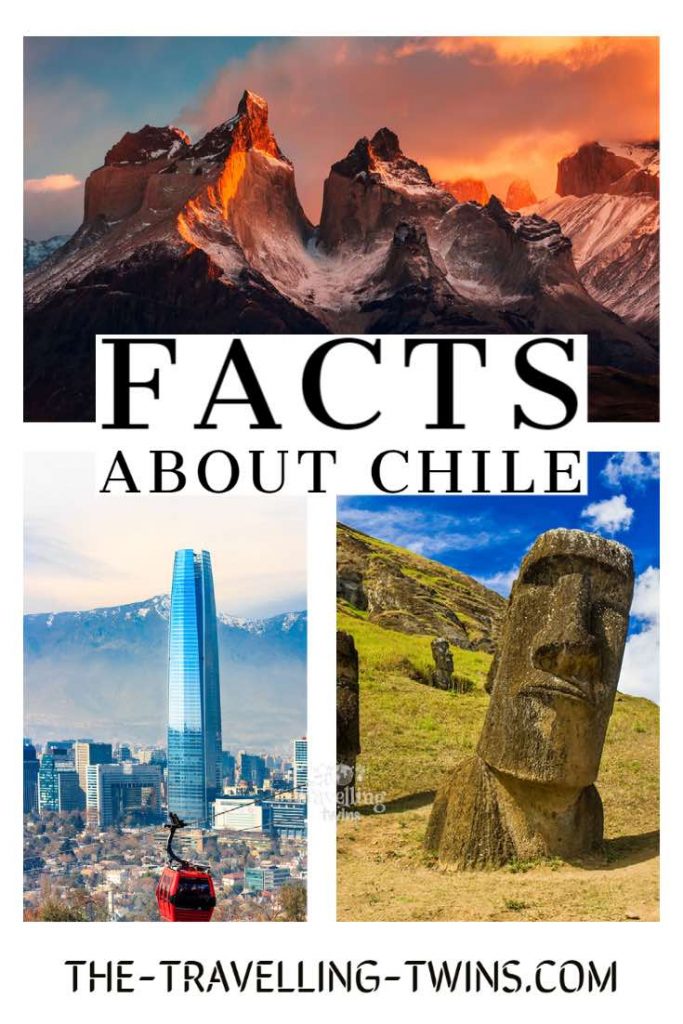Chile is a long, thin country that stretches along the western coast of South America. It is home to a diverse range of landscapes, from the dry Atacama Desert in the north to the icy glaciers of the Patagonia region in the south.
Chile is also home to an array of unique flora and fauna, many of which can be found nowhere else on Earth. Here are just a few interesting facts about Chile – one of the most interesting South American countries.
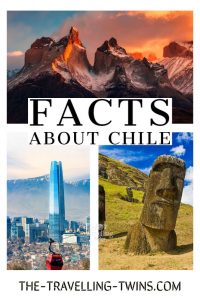
Chile facts about the location
Chile is located in South America, between Peru and Argentina. With a long coastline bordering the Pacific Ocean, Chile has a diverse landscape, with everything from arid deserts to glaciers. The Atacama Desert, in northern Chile, is one of the driest places on Earth.
Meanwhile, southern Chile is home to some of the world’s largest glaciers, including the Onelli Glacier and the Perito Moreno Glacier.
The Andes mountain range runs through the country, providing opportunities for skiing, hiking and mountaineering.
Chile has a long history of political instability, but in recent years it has become one of South America’s most stable and prosperous countries.
Chile also has an active volcanic zone, which includes the Villarrica Volcano and the Lascar Volcano.
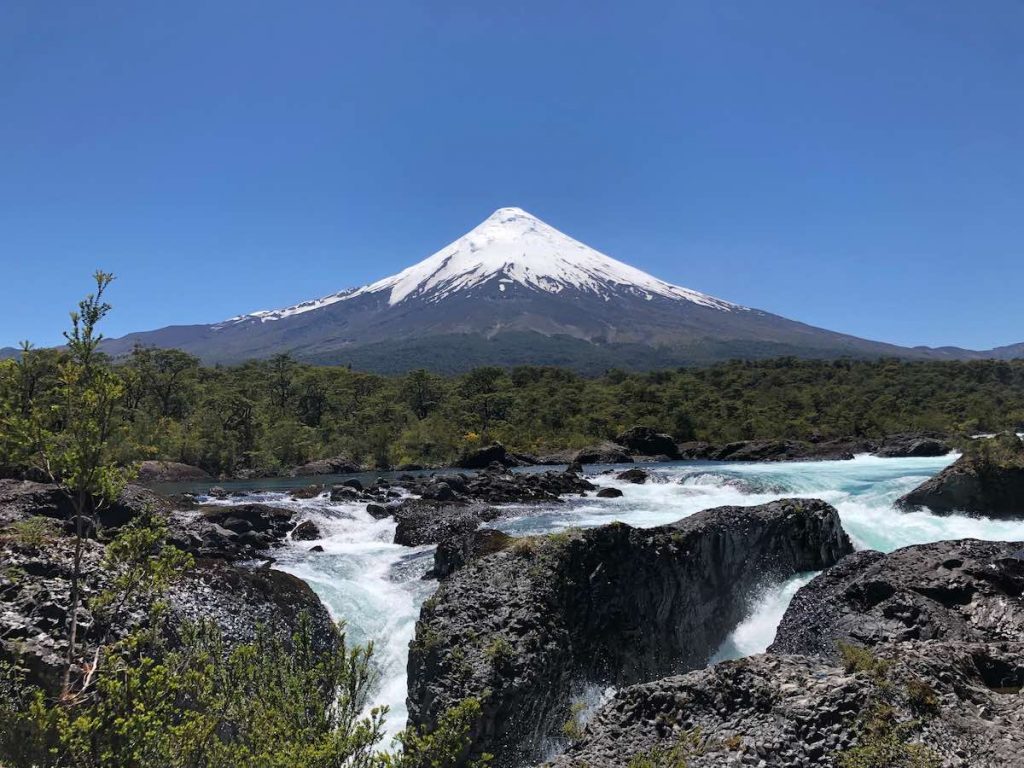
One of the longest countries in the world
Chile is an incredibly long and thin country that stretches along the southwestern coast of South America. At 4,270 kilometers, it is the second longest country in the world, narrowly beaten out by Brazil. Chile is so long and thin that its average width is only 110 kilometers!
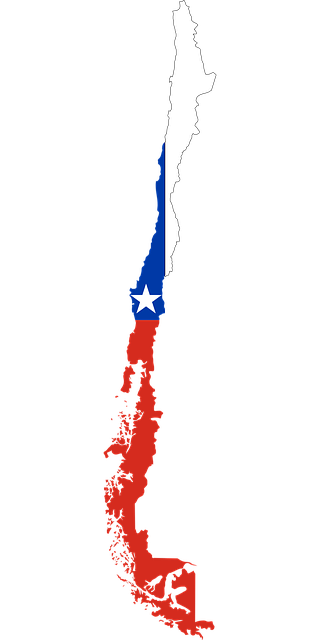
Climat in Chile
Because of its unique shape, Chile has a wide variety of landscapes and climates. In the north, there is a dry desert climate, while the central region has a temperate Mediterranean climate.
The southern region is much cooler and wetter, with glaciers and fjords dotting the landscape. Chile is also home to some of the world’s tallest mountains, including Mount Aconcagua, which stands at 6,962 meters tall.
Where did the name “Chile” come from?
The name “Chile” is believed to come from the indigenous Mapuche word “chilli,” meaning “where the land ends.”
The name “Chile” first appears in historical records in 1536, when it was used by Spanish conquistadors to describe the territory they had conquered.
Chilean flag
At a glance, the flags of Chile and Texan flag appear to be quite similar. Both feature a blue background with white stars, and the placement of the lone star is nearly identical.
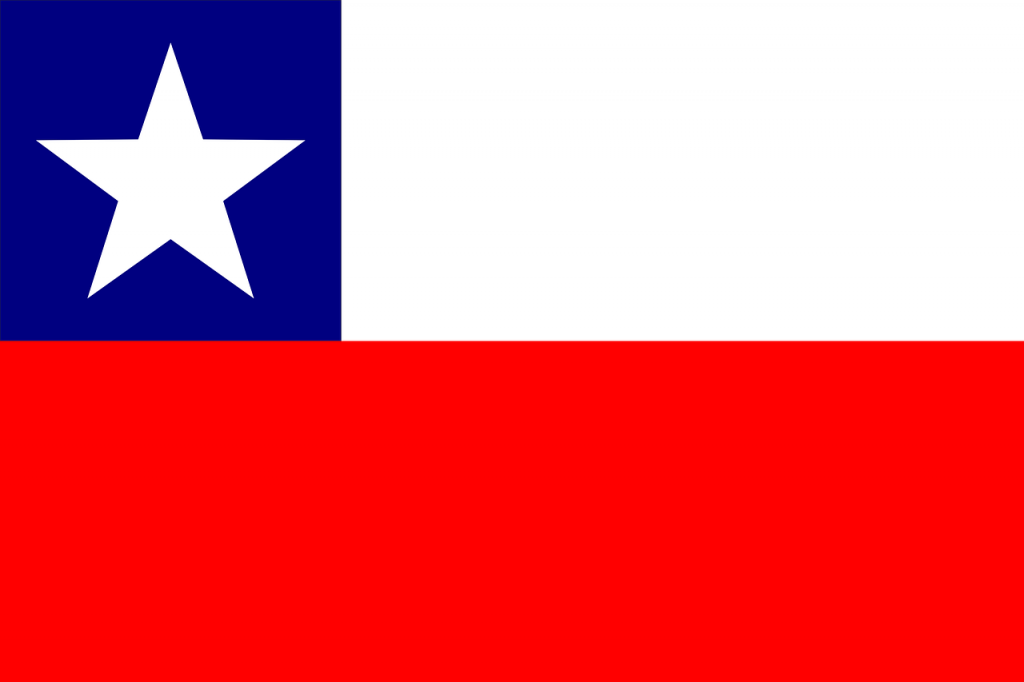
The Chilean flag has a blue square field with a white star, while the Texas flag, it extends to the bottom to form a rectangle.
Food in Chile
Despite its name, Chile is not particularly spicy. The country’s cuisine typically features mild flavors and fresh ingredients. Popular dishes include empanadas (savory pastries), cazuela (a chicken stew), and porotos granados (a beans and squash dish).
Chilean cuisine includes influences from both natives and Europeans alike
Animals in Chile
Chile is home to a wide variety of animals, from the tiny hummingbird to the massive blue whale. The country’s diverse ecosystems provide a habitat for many different species of animals, including both familiar and exotic creatures.
Chile’s coastal waters are home to dolphins, penguins, and seals, while its deserts are home to lizards, snakes, and scorpions.
In the Andes Mountains, visitors can spot pumas, llamas, and alpacas. Chile is also home to the world’s largest concentration of flamingos, which can be found in the Atacama Desert.
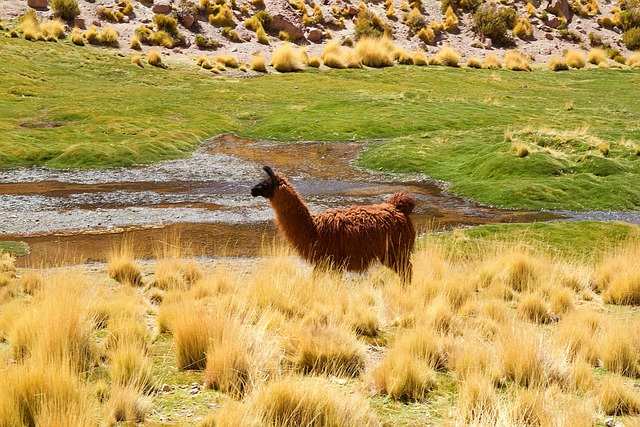
Penguins in Chile
There are four species of penguin that can be found in Chile, including the Magellanic penguin, the Humboldt penguin, the rockhopper penguin, and the king penguin. All of these species are currently classified as either “vulnerable” or “endangered”. This is primarily due to human activity, such as overfishing and pollution.
Magellanic penguins are distinctive for their black and white plumage, and they are also larger than most other types of penguin. The colony at the southern tip of Chile is the largest breeding ground for Magellanic penguins in the world, and it is estimated that there are over a million penguins living there.
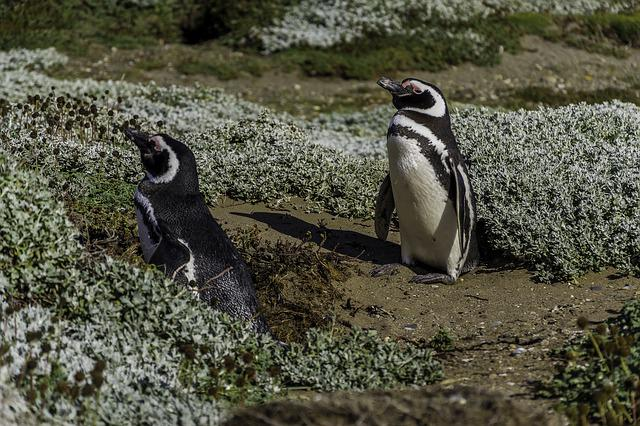
Chile is the biggest copper producer in the world
Chile is the world’s leading producer of copper, accounting for about one-third of global output. The country also has large reserves of lithium, iron ore, and other minerals. Mining has long been a key pillar of the Chilean economy, and the country’s terrain is well suited to large-scale operations.
Copper mines are concentrated in the north of the country, near the border with Peru. Chile’s largest copper mine, Escondida, is located in this region. Lithium deposits are found further south, in the Atacama Desert.
Chile’s mineral wealth has helped to insulate the country from some of the economic shocks that have affected other South American nations. Indeed, despite a recent slowdown in growth, Chile remains one of the most prosperous countries in Latin America.
In Chile, You Can Find the Driest Place on Earth, The Atacama Desert
The Atacama Desert is a place that will amaze you with its vastness and beauty. The desert is located in Chile and it extends to the north of Argentine. It is considered to be one of the driest deserts on earth and sometimes receives no rainfall for years. The only place that receives less rain than the Atacama Desert is Polar Deserts.

Due to its aridity, the Atacama Desert is home to some of the most unique landscapes in the world. From giant sand dunes to eerie Mars-like landscapes, this desert has it all. And if you’re lucky, you might even get to see a rare glimpse of rain.
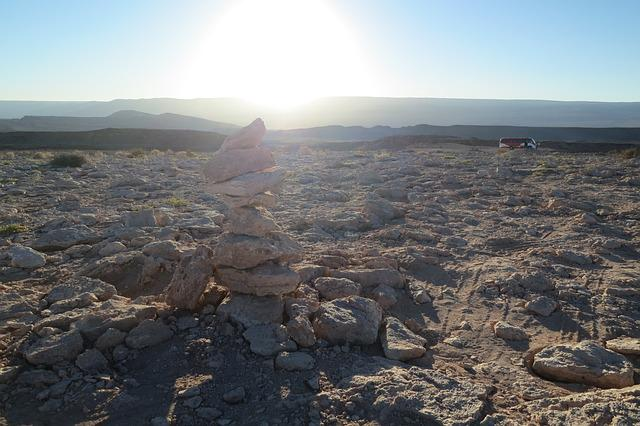
One of the most beautiful places in the Moon Valley – Valle de la Luna
The oldest mummies in the world are from Chile
Chile is home to some of the world’s oldest mummies. The oldest of these mummies, known as the Chinchorro mummies, date back more than 7,000 years.
The Chinchorro people were a fishing culture that inhabited the coasts of modern-day Chile and Peru. Unlike other cultures of the time, the Chinchorro did not simply bury their dead in the ground. Instead, they embalmed their loved ones using a sophisticated mummification technique.
First, they removed all the soft tissues from the body, then they stuffed the body with dry grasses and replaced the skin with reeds. This extensive mummification process allowed the Chinchorro to preserve their deceased for centuries.
Today, the Chinchorro mummies provide insights into the lives of this ancient culture.
Chile is the seventh-largest producer of wine in the world
Chile is the seventh-largest producer of wine in the world, and its wines are gaining in popularity worldwide. Chilean wines are typically made from Cabernet Sauvignon, Merlot, and Carmenere grapes, and they often have a fruit-forward flavor with moderate tannins.
Chile is home to a variety of microclimates, which means that different regions are well-suited to growing different types of grapes. The Maipo Valley, for example, is known for its red wines, while the Casablanca Valley is known for its white wines.
Chile also has a long history of winemaking; the first vines were planted by Spanish missionaries in the 16th century. Today, Chile’s wine industry is thriving, and its wines are exported to countries all over the world.
Pisco sour
The Pisco Sour is a delicious cocktail that is originates from Chile or Peru, depends who you will ask about. Both countries are claiming it. But it it doesn really matter, at least for me, what matter is the fact – The Pisco Sour is a refreshing and unique cocktail that is perfect for any occasion.
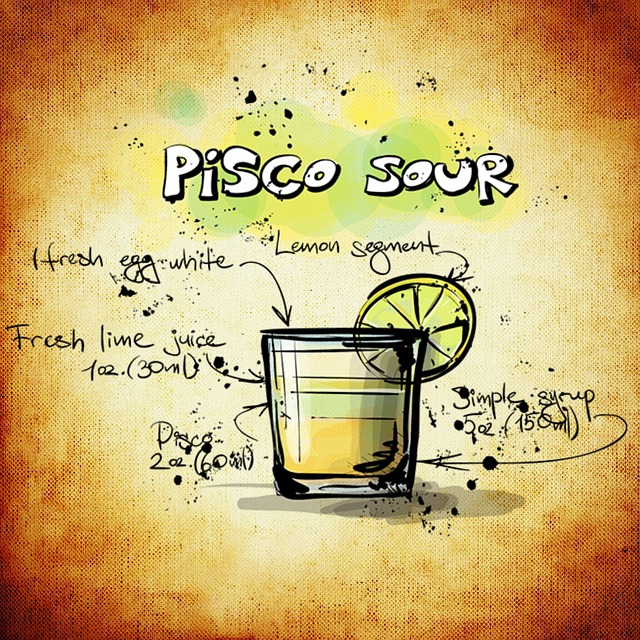
It is made with pisco, a type of brandy that is distilled from grapes, as well as lemon juice, egg whites, and simple syrup. The egg whites give the drink a foamy texture, while the lemon juice provides a tart contrast to the sweetness of the syrup.
Two Chileans have won the Nobel Prize in Literature
Gabriela Mistral and Pablo Neruda are two of the most important figures in Latin American literature. Mistral was a Chilean poet who was the first Latin American to win the Nobel Prize in Literature, while Neruda was a Chilean poet and politician who is considered one of the greatest poets of the 20th century.
Both Mistral and Neruda were deeply influenced by their experiences in Latin America, and their work often reflects the political and social turmoil of their time. In addition to their literary achievements, Mistral and Neruda also played an important role in promoting cultural exchange between Latin America and the rest of the world. Their work helped to bring Latin American literature to a wider audience, and their influence can still be felt today.
Chile is one of the most earthquake-prone countries
Chile is located along the Ring of Fire, a belt of volcanoes and earthquake zones that circles the Pacific Ocean. As a result, Chile is one of the most earthquake-prone countries in the world.
In 1960, a magnitude 9.5 earthquake struck southern Chile, causing widespread damage and loss of life. In 2010, a magnitude 8.8 earthquake hit central Chile, causing even more devastation.
These earthquakes are a reminder of the immense power of nature and the need for countries like Chile to be prepared for disaster. In the wake of these disasters, Chile has enacted strict building codes and developed an extensive early warning system to help protect its citizens from future earthquakes.
Easter Island belongs to Chile
Easter Island is one of the most remote islands in the world. It is a small speck of land in the middle of the Pacific Ocean, more than 2,000 miles from mainland Chile, the nearest mainland country. The island is one of the most isolated places on Earth, and the park is home to an array of unique flora and fauna
The island is best known for its mysterious stone statues, which were created by the Rapa Nui people centuries ago.
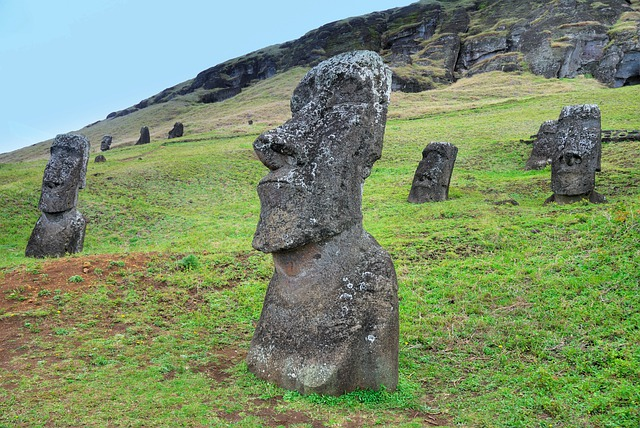
In 1966 Rapa Nui National Park was established. The park is UNESCO World Heritage Site and home to the world-famous Moai statues, which were carved by the Rapa Nui people hundreds of years ago.
The Gran Torre Santiago is the tallest building in South America
At 1,068 feet tall, the Torre Costanera in Santiago, Chile is the tallest building in South America. The skyscraper was completed in 2009 and features offices, residences, and a hotel.

The tower is situated in the Financial District of Santiago and offers breathtaking views of the city. The building was designed by Laurence Shenfield of Skidmore, Owings & Merrill LLP and is an iconic symbol of Santiago’s skyline.
If you’re ever in the city, be sure to take a trip to the top of the Torre Costanera for some of the best views in town.
What to see in Chile
Chile is a land of contrasts, with something to suit everyone. From the sparkling waters of Lake District to the rugged peaks of the Andes, there is no shortage of places to explore. Here are just a few of the many places to see when you visit Chile:
In Northern Chile Is home to The Atacama Desert is one of the driest places on earth, and its otherworldly landscape, which will take your breath away. Near the desert in the small town of San Pedro de Atacama you can admire interesting archaeological sites. The most popular of these is the Pukara de Quitor, an ancient Inca fort. Other sites include the Chullpa Towers, a burial site for the pre-Inca civilisation known as the Chinchorro, and the Valle de la Luna, a valley that is said to resemble the surface of the moon.
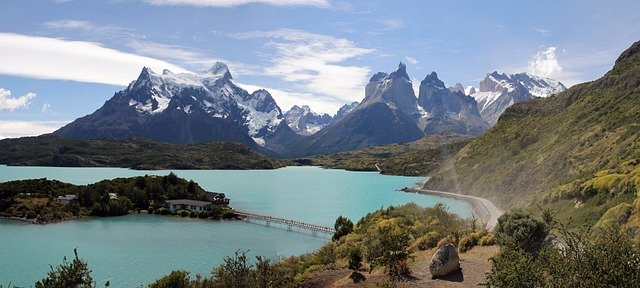
For anyone interested in wildlife, a trip to Torres del Paine National Park is a must. Located in southern Chile, the park is home to an array of wildlife including guanacos, rheas, and pumas. Visitors can also enjoy hiking, horseback riding, and kayaking in this stunning setting. This stunning park is home to glaciers, lakes, and mountains, and is a must-see for any nature lover.
For those looking to escape the city, the surrounding area is home to several vineyards and much-loved tourist destinations such as Valparaiso and Viña del Mar.
For a taste of Chilean culture, visit Santiago, the capital city. Here you can explore museums, sample delicious food, and shop for traditional handicrafts.
Chile’s Andes Mountains Has Some of the World’s Largest and Still Active Volcanoes
Chile is home to some of the most active volcanoes in the world. there are 29 active volcanos – out of 43. Among them are Villarrica, which last erupted in 2015; Nevados de Chillan, which erupted in 2019; and Calbuco, which last erupted in 2015.
Chile also has a number of volcanoes that are considered to be “potentially active,” including Lascar, Michinmahuida, and Osorno.
While volcanic activity can bring devastation to nearby communities, it can also have positive effects. Volcanoes can create new land, as well as provide nutrients for plants and animals. They can also attract tourists, who bring much-needed economic activity to local communities.
Chile’s national dance is called “cueca”
Chile’s national dance is the cueca. The dance originated in the central valley of Chile and is a courtship dance between a man and a woman. The dance is usually performed to traditional Chilean folk music, which often features guitars, drums, and clapping.
The basic steps of the cueca involve the man waving a handkerchief or hat, while the woman responds by tossing her skirt and moving her feet side to side. As the dance progresses, the man and woman move closer and closer together until they are finally united in a embrace.
The cueca is a joyful dance that celebrates Chile’s rich history and unique culture. When performed with enthusiasm and skill, it is sure to fill any onlooker with admiration and joy.
Chile is the only country with private water
In Chile, water is a privatized commodity, and the only country in the world where this is the case. This means that access to clean drinking water is not a basic human right, but a privilege that must be purchased.
This can put a significant strain on families, especially those who live in poverty. In addition, the privatization of water can lead to environmental problems. When water companies are profit-driven, they may be more likely to cut corners in order to increase profits.
This can result in subpar water quality and increased pollution. The privatization of water is a controversial issue and one that has significant implications for Chileans.
Chile has the. World’s Biggest Swimming Pool is in Chile
One of the world’s largest swimming pool is located in Chile. The pool, which is located in the San Alfonso del Mar Resort in the city of Algarrobo, measures 1,013 feet long and has a depth of 115 feet. It is filled with seawater from the nearby Pacific Ocean.
The pool is a Guinness World record holder open to the public and is popular with both locals and tourists. It has been featured in several films and television shows.
There are 7 UNESCO World Heritage Sites in Chile
Chile is home to some of the most beautiful UNESCO World Heritage Sites in the world.
Chile is home to a remarkable number of Unesco World Heritage sites. From the historic city of Valparaiso to the stunning natural landscapes of Torres del Paine, these sites offer a glimpse into Chile’s diverse history and culture.
Valparaiso, for example, is a colorful city with a rich maritime heritage. Founded in 1542, it was once a major port for ships travelling between Spain and South America. Today, its steep hills and labyrinthine streets are dotted with brightly-painted houses, quaint cafes, and art galleries.
In contrast, Torres del Paine is an otherworldly landscape of glaciers, mountains, and rivers. situated in southern Chile, it is one of the most popular tourist destinations in the country.
In addition to the national parks, Chile also has 47 national reserves and 17 national monuments. These protected areas help to preserve the country’s unique biodiversity and provide visitors with an opportunity to experience a wide variety of landscapes.
Indigenous groups in Chile
Chile is home to a number of indigenous groups, each with its own unique customs and traditions. The largest of these groups is the Mapuche, who make up around four percent of the country’s population.
Other notable indigenous groups in Chile include the Aymara, Rapa Nui, and Kawésqar. While each group has their own distinct traditions, they all share a deep connection to the land and its history. As such, they play an important role in preserving Chile’s rich cultural heritage.
Chile Facts
